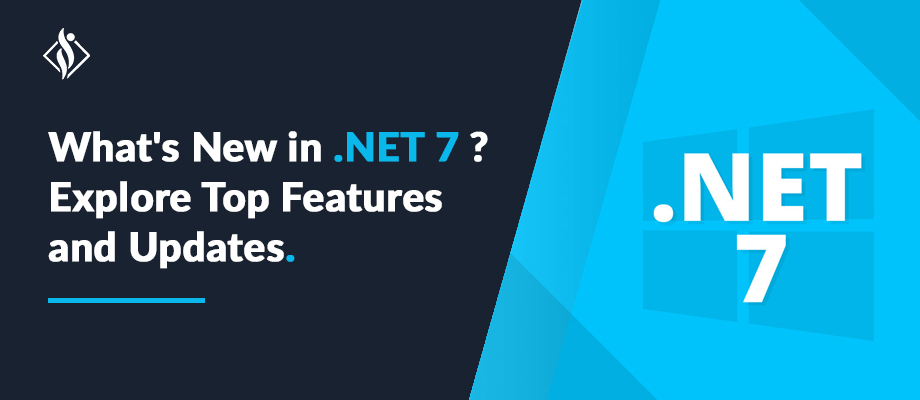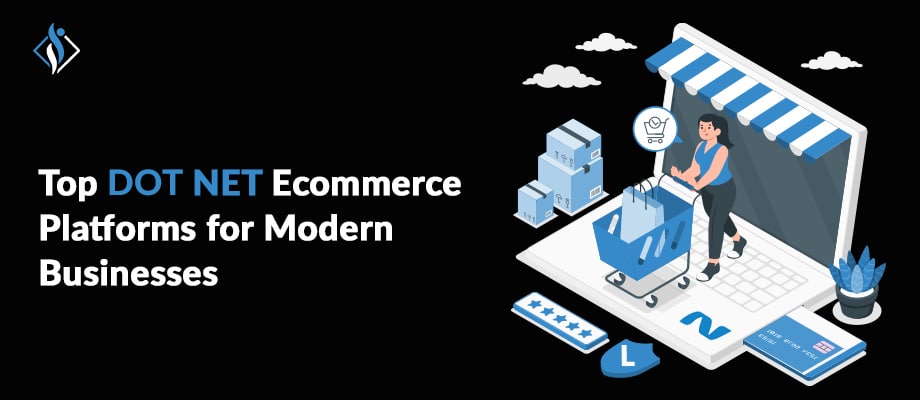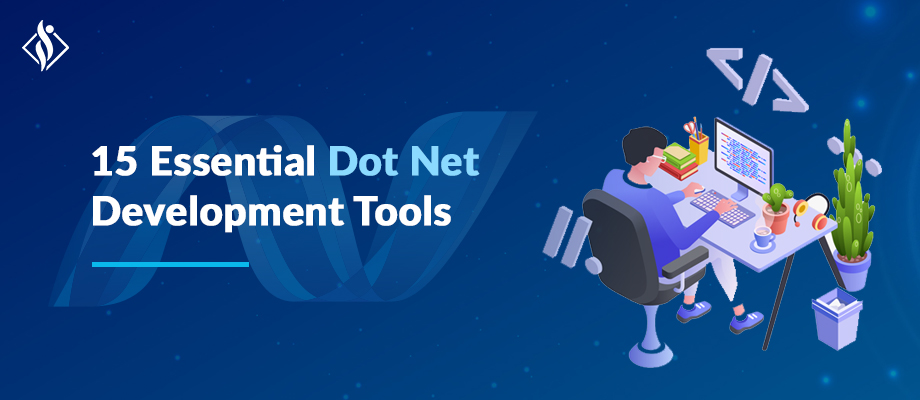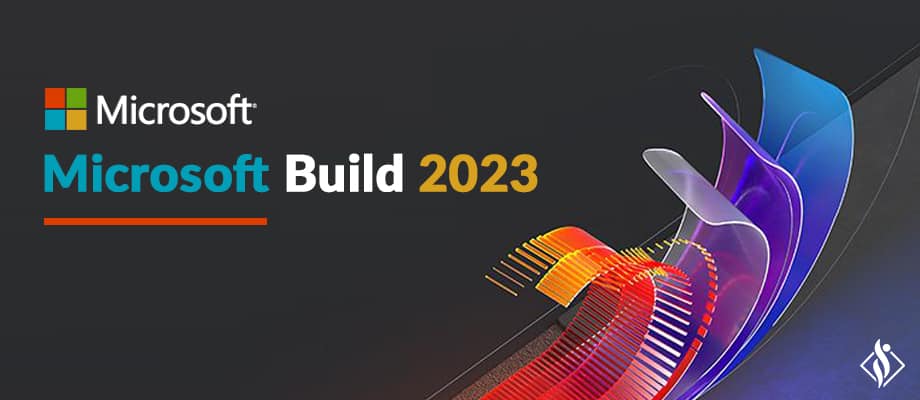Home » .NET Development » .NET 7 Stable Version: All New Features and Updates
.NET 7 Stable Version: All New Features and Updates

Enter Dot NET 7, the latest version that has taken the tech community by storm. This iteration is not just an upgrade; it’s a revolution, boasting features and improvements that cater especially to web development. From enhanced performance to new libraries, Dot NET 7 is shaping up to be a game-changer. But the question on everyone’s mind is: Are programmers making the switch? Dive in as we unravel the allure of .NET 7 and what it means for the future of web development.
Prerequisite:
- Basic knowledge of C#
- Basic knowledge of .NET
- Visual Studio 2019
What is the .NET?
Dot NET is a free, cross-platform, open source developer platform for building many different types of applications. With .NET, you can use multiple languages, editors, and libraries to build for web, mobile, desktop, games, IoT, and more. There are many versions of Dot NET are available like .NET 5 .NET 6, .NET 7 & more.
Today we are talking about of Dot NET 7 which was released recently.
About .NET 7
Dot NET 7 is the latest stable version of .NET legacy after Dot NET 6, for .NET 7 Microsoft focus on to make it unified, modern, simple, and fast. This version comes with standard-term support (STS) that means it will be supported for 18 months.
Performance
In the digital symphony of coding, Dot NET 7 emerges as the crescendo, setting a new benchmark in performance. This latest rendition from Microsoft isn’t just an update; it’s a testament to the relentless pursuit of excellence in software development. Dive into the world where speed meets innovation.
1. On-stack replacement (OSR)
It allows the runtime to change the code executed by a currently running method in the middle of its execution (that is, while it’s “on stack”). Long-running methods can switch to more optimized versions mid-execution.
2. LINQ – Language Integrated Query
Here we can see a significant improvement in the speed of these methods since the Dot NET 7 version takes only a fraction of the time the Dot NET 6 version requires. Even more dramatic is the improvement in memory allocation, where we can see the .NET 7 version uses no memory to perform these tasks.
This performance boost is achieved by vectorization of these methods using the Vector<T> class.
Here is comparison of result of LINQ Aggregate Methods in .NET 6 & 7.
LINQ Aggregate methods like Min(), Max(), Average(), Count(), and Sum(.

System.Text.Json serialization
- Contract customization gives you more control over how types are serialized and deserialized.
DefaultJsonTypeInfoResolver() constructor is used to obtain the JsonSerializerOptions.TypeInfoResolver and adding your custom actions to its Modifiers property.
JsonSerializerOptions options = new()
{
TypeInfoResolver = new DefaultJsonTypeInfoResolver
{
Modifiers =
{
MyCustomModifier1,
MyCustomModifier2
}
}
}; We can add multiple modifiers and they’ll be called sequentially.
- Polymorphic serialization for user-defined type hierarchies.
This features allow us to do serialization with specified discriminators for derived class.
[JsonDerivedType(typeof(WeatherForecastBase), typeDiscriminator: "base")] [JsonDerivedType(typeof(WeatherForecastWithCity), typeDiscriminator: "withCity")] public class WeatherForecastBase
{
public DateTimeOffset Date { get; set; }
public int TemperatureCelsius { get; set; }
public string? Summary { get; set; }
}
public class WeatherForecastWithCity : WeatherForecastBase
{
public string? City { get; set; }
} In above code “base” & “withCity” are discriminators for serialization.
Generic Math
- Dot NET 7 introduces new math-related generic interfaces to the base class library.
We can constrain a type parameter of a generic type or method to be “number-like”. It allows us to perform mathematic operations generically.
For example:
static T Add<T>(T left, T right)
where T : INumber<T>
{
return left + right;
} In this method, the type parameter T is constrained to be a type that implements the new INumber interface. INumber implements the IAdditionOperators interface, which contains the + operator. That allows the method to generically add the two numbers. The method can be used with any of .NET’s built-in numeric types, because they’ve all been updated to implement INumber in .NET 7.
The interfaces in Generic Math
Numeric interfaces: interfaces in System.Numerics that describe number-like types and the functionality available to them.
Operator interfaces: The operator interfaces correspond to the various operators available to the C# language.
Few examples of Operator Interfaces:
- IAdditionOperators<TSelf,TOther,TResult>: x + y
- IBitwiseOperators<TSelf,TOther,TResult>: x & y, x | y, x ^ y, and ~x
Function interfaces: The function interfaces define common mathematical APIs that apply more broadly than to a specific numeric interface.
Few examples of Function Interfaces:
- IExponentialFunctions<TSelf>: Exposes exponential functions supporting e^x, e^x – 1, 2^x, 2^x – 1, 10^x, and 10^x – 1.
- IHyperbolicFunctions<TSelf>: Exposes hyperbolic functions supporting acosh(x), asinh(x), atanh(x), cosh(x), sinh(x), and tanh(x).
Parsing and formatting interfaces : Parsing and formatting are core concepts in programming. They’re commonly used when converting user input to a given type or displaying a type to the user.
Few examples of Parsing and Formatting Interfaces:
- IParsable<TSelf>: Exposes support for T.Parse(string, IFormatProvider) and T.TryParse(string, IFormatProvider, out TSelf).
- ISpanParsable<TSelf>: Exposes support for T.Parse(ReadOnlySpan<char>, IFormatProvider) and T.TryParse(ReadOnlySpan<char>, IFormatProvider, out TSelf).
Regular Expressions
NET’s regular expression library has seen significant functional and performance improvements in Dot NET 7. Regular expression source generators are new. Source generators build an engine that’s optimized for your pattern at compile time, providing throughput performance benefits.
For case-insensitive searches, .NET 7 includes large performance gains. The gains come because specifying RegexOptions.IgnoreCase no longer calls ToLower on each character in the pattern and on each character in the input. Instead, all casing-related work is done when the Regex is constructed.
EF Core 7.0
Entity Framework Core 7.0 includes provider-agnostic support for JSON columns, improved performance for saving changes, and custom reverse engineering templates.
1. JSON Columns
EF7 contains provider-agnostic support for JSON columns, with an implementation for SQL Server. This support allows the mapping of aggregates built from Dot NET types to JSON documents. Normal LINQ queries can be used on the aggregates, and these will be translated to the appropriate query constructs needed to drill into the JSON. EF7 also supports updating and saving changes to JSON documents.
2. Mapping to JSON columns
For Example, We are storing contact details in multiple columns like phone, Address in multiple columns like City, County, Post Code and all. Each different type record having separate column, Now in EF7 we can get all data in single column in JSON type.
Syntax Example as below,
protected override void OnModelCreating(ModelBuilder modelBuilder)
{
modelBuilder.Entity<Author>().OwnsOne(
author => author.Contact, ownedNavigationBuilder =>
{
ownedNavigationBuilder.ToJson();
ownedNavigationBuilder.OwnsOne(contactDetails => contactDetails.Address);
});
} Here, ContactDetails aggregate type can be mapped to a JSON column. This requires just one call to ToJson() when configuring the aggregate type.
It looks as below,

ML.NET
ML.NET is an open-source, cross-platform machine learning framework for .NET developers that enables integration of custom machine learning models into .NET apps.
ML.NET Text Classification API
Text classification as the name implies is the process of applying labels or categories to text. Use cases of ML.Net Text Classification API like Categorizing e-mail as spam or not spam , Analyzing sentiment as positive or negative from customer reviews , Applying labels to support tickets
Do programmers switch to .NET 7?
Dot Net 7 is gives great performance and appealing features so it is beneficial to upgrade with this. But since .Net 7 released with standard support that means it will supported by Microsoft up to 18 months from release so it is good to upgrade for short term products.
For big enterprise level or long term products, developers should wait for .upcoming version of .NET “.NET 8”. It will be released with LTS (long-term-support) that means it will continue to receive support, updates, and bug fixes for at least three years from its release date. Possible Release date of Dot NET 8 is November 2023. Thank you for reading. For getting frequent updates Stay Connected with us.
As a dedicated full-stack developer at Samarpan Infotech, I specialize in .NET Core, Angular. With a passion for crafting seamless user experiences and an unwavering commitment to continuous learning, I am devoted to developing dynamic, user-centric applications.



